A uniform solid cylinder having height l and diameter d is placed on a rough horizontally plank which is being pulled horizontal with an acceleration. Find the maximum value of the acceleration for which the cylinder remain in equilibrium
gdl
gd2l
gld
gl2d
To solve the problem of finding the maximum acceleration A for which a uniform solid cylinder remains in equilibrium on a rough horizontal plank being pulled with acceleration A, we can follow these steps:
Step 1: Understand the Forces Acting on the Cylinder
The cylinder experiences several forces:
- Its weight W=mg acting downwards at its center of mass.
- The normal force N acting upwards at the point of contact with the plank.
- The frictional force f acting horizontally to the left (opposite to the direction of the plank's acceleration).
Step 2: Apply Newton's Second Law in the Horizontal Direction
Since the plank is accelerating to the right with acceleration A, we can analyze the forces in the horizontal direction. The frictional force must balance the pseudo force acting on the cylinder due to the acceleration of the plank:
f=mA
Where f is the frictional force.
Step 3: Consider the Torque About the Center of Mass
For the cylinder to remain in equilibrium, we also need to consider the rotational equilibrium. The torque due to the frictional force must balance the torque due to the weight of the cylinder. The weight mg acts at the center of mass, and the lever arm for the weight is d2 (half the diameter). The frictional force f acts at the edge of the cylinder, and its lever arm is L (the height of the cylinder).
The torque due to the frictional force is:
τf=f⋅L
And the torque due to the weight is:
τw=mg⋅d2
Step 4: Set Up the Torque Equation
For rotational equilibrium, the sum of the torques must be zero:
f⋅L=mg⋅d2
Step 5: Substitute the Friction Force
From the horizontal force balance, we have f=mA. Substituting this into the torque equation gives:
mA⋅L=mg⋅d2
Step 6: Simplify the Equation
We can cancel m from both sides (assuming m≠0):
AL=g⋅d2
Step 7: Solve for Maximum Acceleration A
Rearranging the equation to solve for A:
A=g⋅d2L
Thus, the maximum value of the acceleration A for which the cylinder remains in equilibrium is:
A=gd2L
Final Answer
The maximum acceleration A for which the cylinder remains in equilibrium is:
A=gd2L
---
The cylinder experiences several forces:
- Its weight W=mg acting downwards at its center of mass.
- The normal force N acting upwards at the point of contact with the plank.
- The frictional force f acting horizontally to the left (opposite to the direction of the plank's acceleration).
Since the plank is accelerating to the right with acceleration A, we can analyze the forces in the horizontal direction. The frictional force must balance the pseudo force acting on the cylinder due to the acceleration of the plank:
f=mA
Where f is the frictional force.
For the cylinder to remain in equilibrium, we also need to consider the rotational equilibrium. The torque due to the frictional force must balance the torque due to the weight of the cylinder. The weight mg acts at the center of mass, and the lever arm for the weight is d2 (half the diameter). The frictional force f acts at the edge of the cylinder, and its lever arm is L (the height of the cylinder).
τf=f⋅L
And the torque due to the weight is:
τw=mg⋅d2
For rotational equilibrium, the sum of the torques must be zero:
f⋅L=mg⋅d2
From the horizontal force balance, we have f=mA. Substituting this into the torque equation gives:
mA⋅L=mg⋅d2
We can cancel m from both sides (assuming m≠0):
AL=g⋅d2
Rearranging the equation to solve for A:
A=g⋅d2L
Thus, the maximum value of the acceleration A for which the cylinder remains in equilibrium is:
A=gd2L
The maximum acceleration A for which the cylinder remains in equilibrium is:
A=gd2L
Topper's Solved these Questions
- SYSTEM OF PARTICLES AND ROTATIONAL MOTIONBOOK - AAKASH INSTITUTECHAPTER - SYSTEM OF PARTICLES AND ROTATIONAL MOTIONEXERCISE - Assignment (Section - C) Objective Type Questions (More than one option are correct)
28 Videos
- SYSTEM OF PARTICLES AND ROTATIONAL MOTIONBOOK - AAKASH INSTITUTECHAPTER - SYSTEM OF PARTICLES AND ROTATIONAL MOTIONEXERCISE - Assignment (Section - D) Linked Comprehension Type Questions
20 Videos
- SYSTEM OF PARTICLES AND ROTATIONAL MOTIONBOOK - AAKASH INSTITUTECHAPTER - SYSTEM OF PARTICLES AND ROTATIONAL MOTIONEXERCISE - Assignment (Section - A) Objective Type Questions (One option is correct)
62 Videos
- SEMICONDUCTOR ELECTRONICS: MATERIALS, DEVICES AND SIMPLE CIRCUITSBOOK - AAKASH INSTITUTECHAPTER - SEMICONDUCTOR ELECTRONICS: MATERIALS, DEVICES AND SIMPLE CIRCUITSEXERCISE - Assignment (Section-D (Assertion and reason))
5 Videos
- TEST 1BOOK - AAKASH INSTITUTECHAPTER - TEST 1EXERCISE - EXERCISE
9 Videos
Similar Questions
Light thread is tightly wound on a uniform solid cylinder of radius R. The cylinder is placed on a smooth horizontal table and the thread is pulled horizontally as shown, by applying a constant force F. How much length of the thread is unwound from the cylinder by the time its kinetic energy becomes equal to K.

View SolutionA container shown in Fig. is accelerated horizontally with acceleration a.
a. Find the minimum value of a at which liquid just starts spilling out.
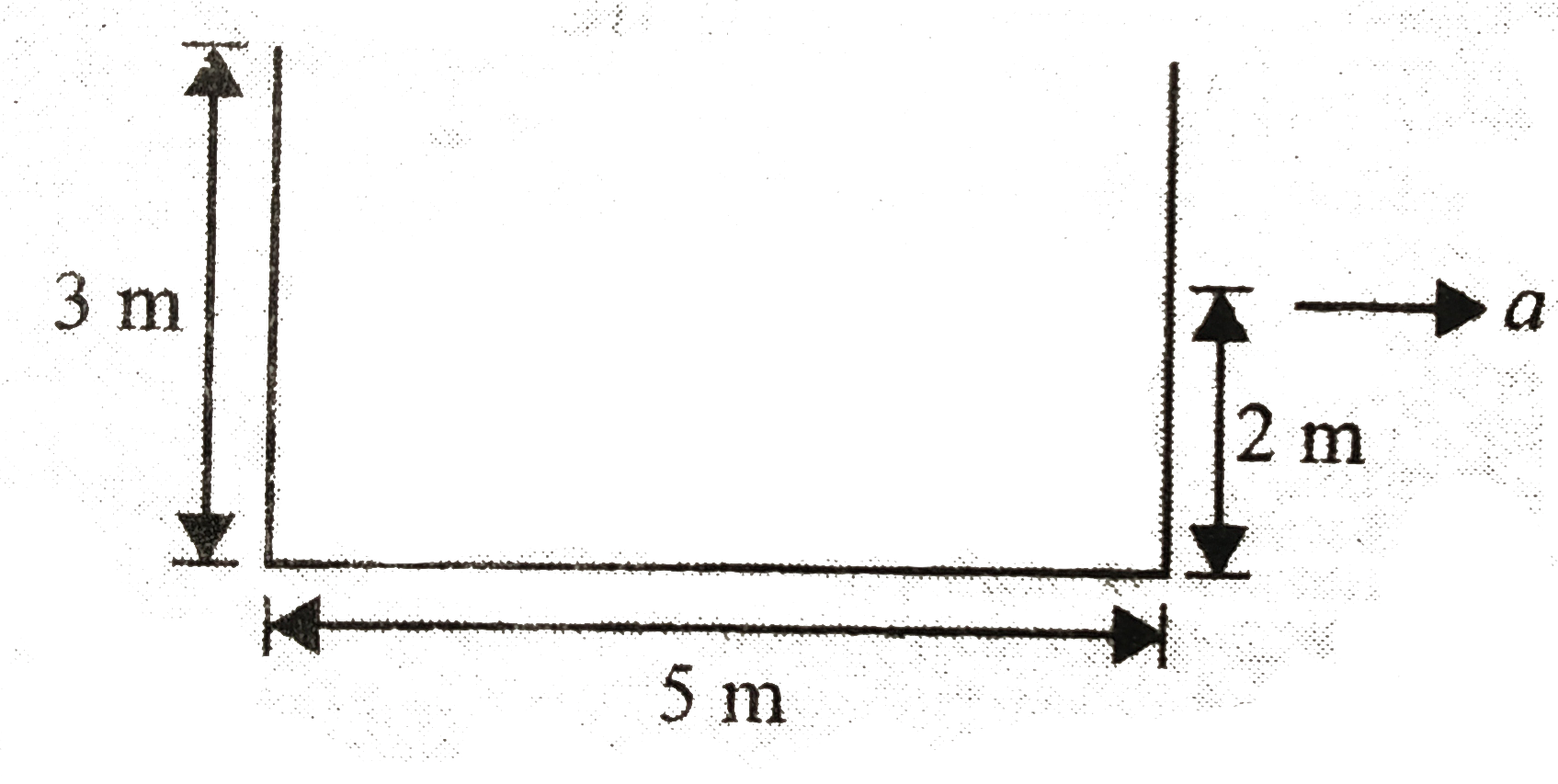
View Solution
Knowledge Check
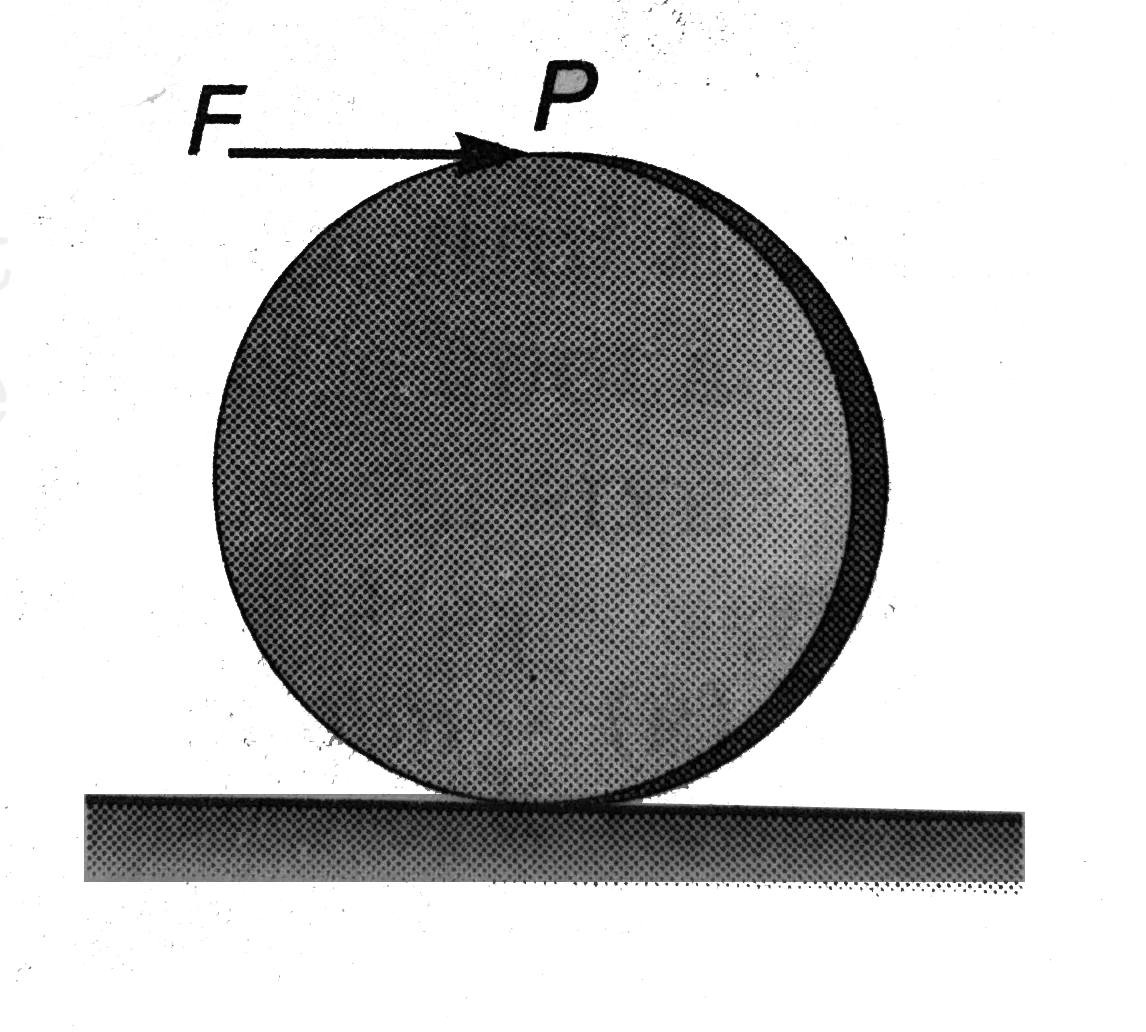
A uniform solid cylinder of mass m and radius R is placed on a rough horizontal surface. A horizontal constant force F is applied at the top point P of the cylinder so that it start pure rolling. The acceleration of the cylinder isAF/3mB2F/3mC4F/3mD5F/3mA uniform cylinder of mass M and radius R is placed on a rough horizontal board, which in turn is placed on a smooth surface. The coefficient of friction between the board and the cylinder is μ. If the board starts accelerating with constant acceleration a, as shown in the figure, then
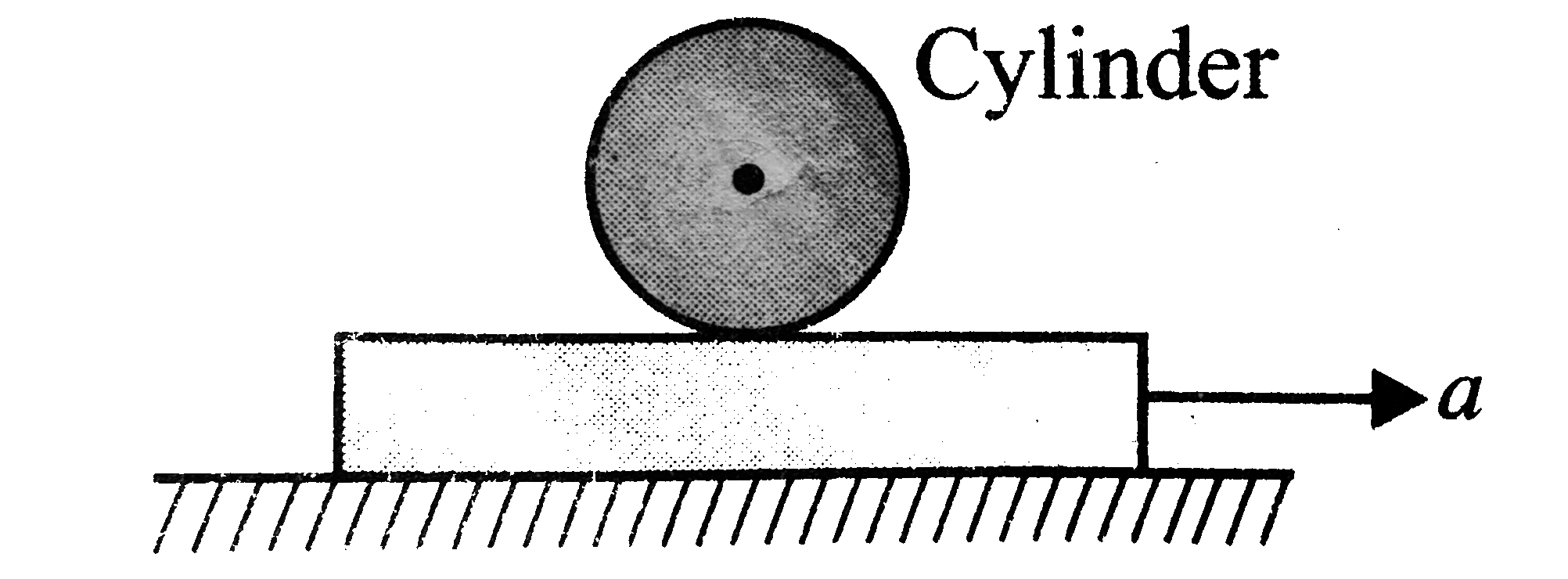 Afor pure rolling motion of the cylinder, direction of frictional force is forward and its magnitude is Ma/3Bthe maximum value of a, so that cyliner performs pure rolling is 3μgCThe acceleration of the centre of mass of te cylinder under pure rolling condition for the given a is a/3Dnone of these
Afor pure rolling motion of the cylinder, direction of frictional force is forward and its magnitude is Ma/3Bthe maximum value of a, so that cyliner performs pure rolling is 3μgCThe acceleration of the centre of mass of te cylinder under pure rolling condition for the given a is a/3Dnone of theseA solid sphere of radius R is placed on a smooth horizontal surface. A horizontal force F is applied at height h from the lowest point. For the maximum acceleration of the centre of mass
Ah=RBh=2RCh=0Dthe acceleration will be same whatever h may be
A uniform solid cylinder of radius R=15cm rolls over a horizontal plane passing into an inclined plane forming an angle α=30∘ with the horizontal. Find the maximum value of the velocity v0 which still permits the cylinder to roll on the inclined plane section without a jump. (The sliding is assumed to be absent).

View SolutionA uniform solid cylinder of radius R=15cm rolls over a horizontal plane passing into an inclined plane forming an angle α=30∘ with the horizontal(figure). Find the maximum value of the velocity v0 which still permits the cylinder to roll onto the inclined plane section without a jump. The sliding is assumed to be absent.
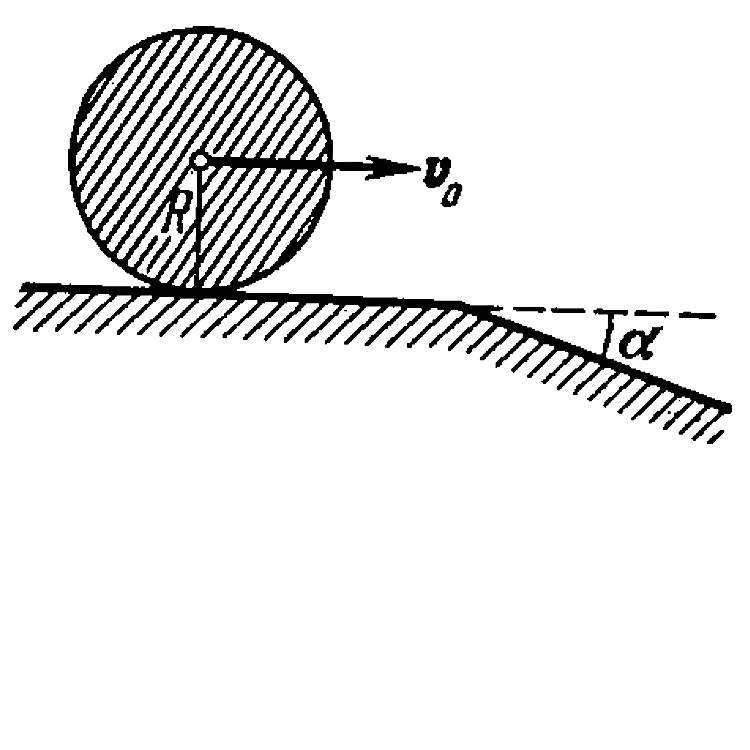
View SolutionThin threads are tightly wound on the ends of a uniform solid cylinder of mass m. The free ends of the threads are attached to the ceiling of an elevator car. The car starts going up with an acceleration w0. Find the acceleration w′ . Find the acceleration w′ of the cylinder relative to the car and the force F exerted by the cylinder on the ceiling (through the threads).
View SolutionA uniform solid cylinder of radius R=20cm rolls over a horizontal plane and passes on to an inclined plane meeting the horizontal plane at angle α=30∘ with the horizontal. Find the maximum value of velocity v0 which still permits the cylinder to roll into the inclined plane without a jump. Assume sliding to be absent.
View SolutionA uniform solid cylinder of mass m rests on two horizontal planks. A thread is wound on the cylinder. The hanging end of the thread is pulled vertically down with a constant force F.
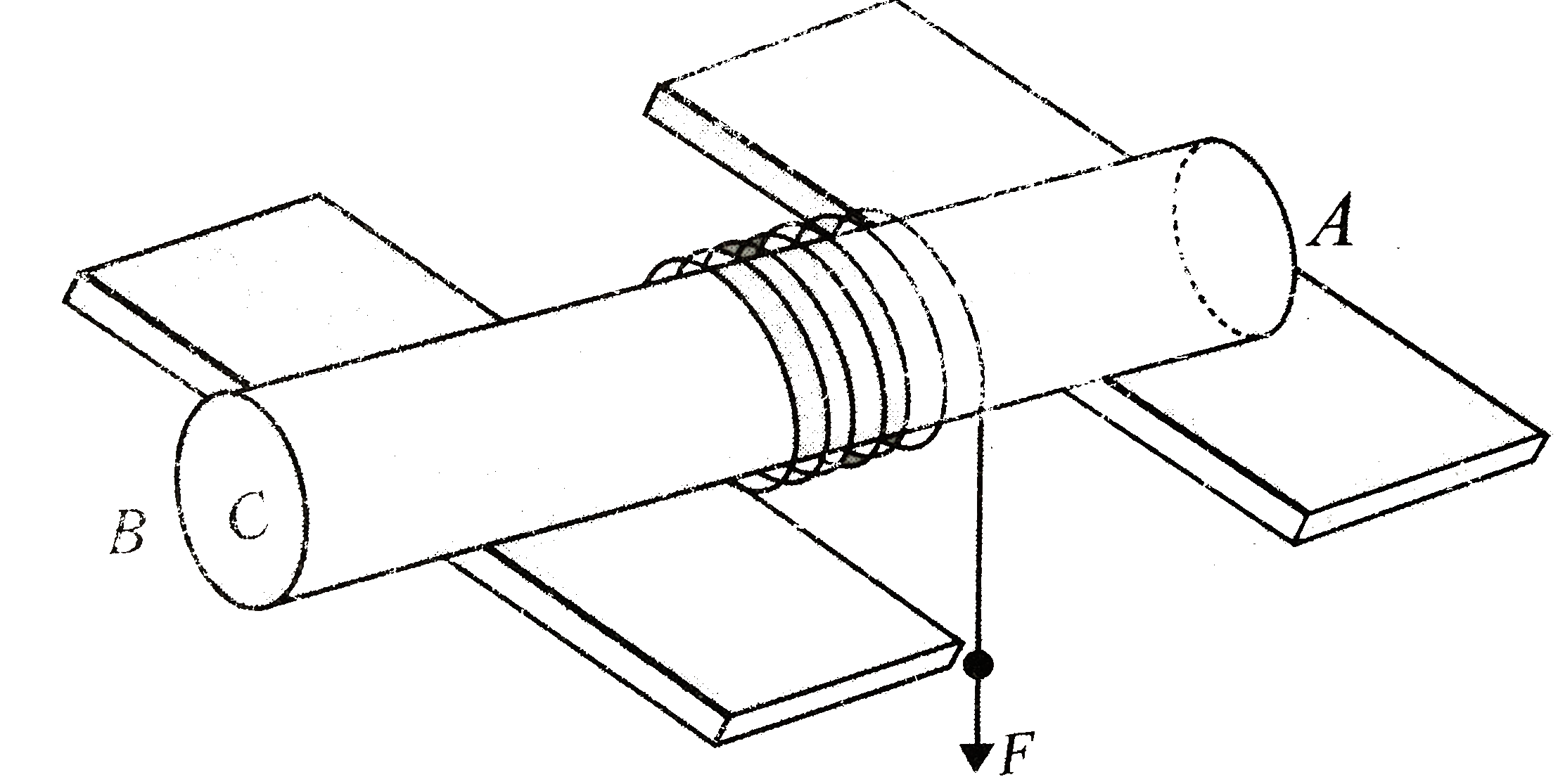
Find the maximum magnitude of the force F which may be applied without bringing about any sliding of the cylinder, if the coefficient of friction between the plank and the cylinder is equal to μ. What is the maximum acceleration of the centre of mass over the planks?
View Solution
